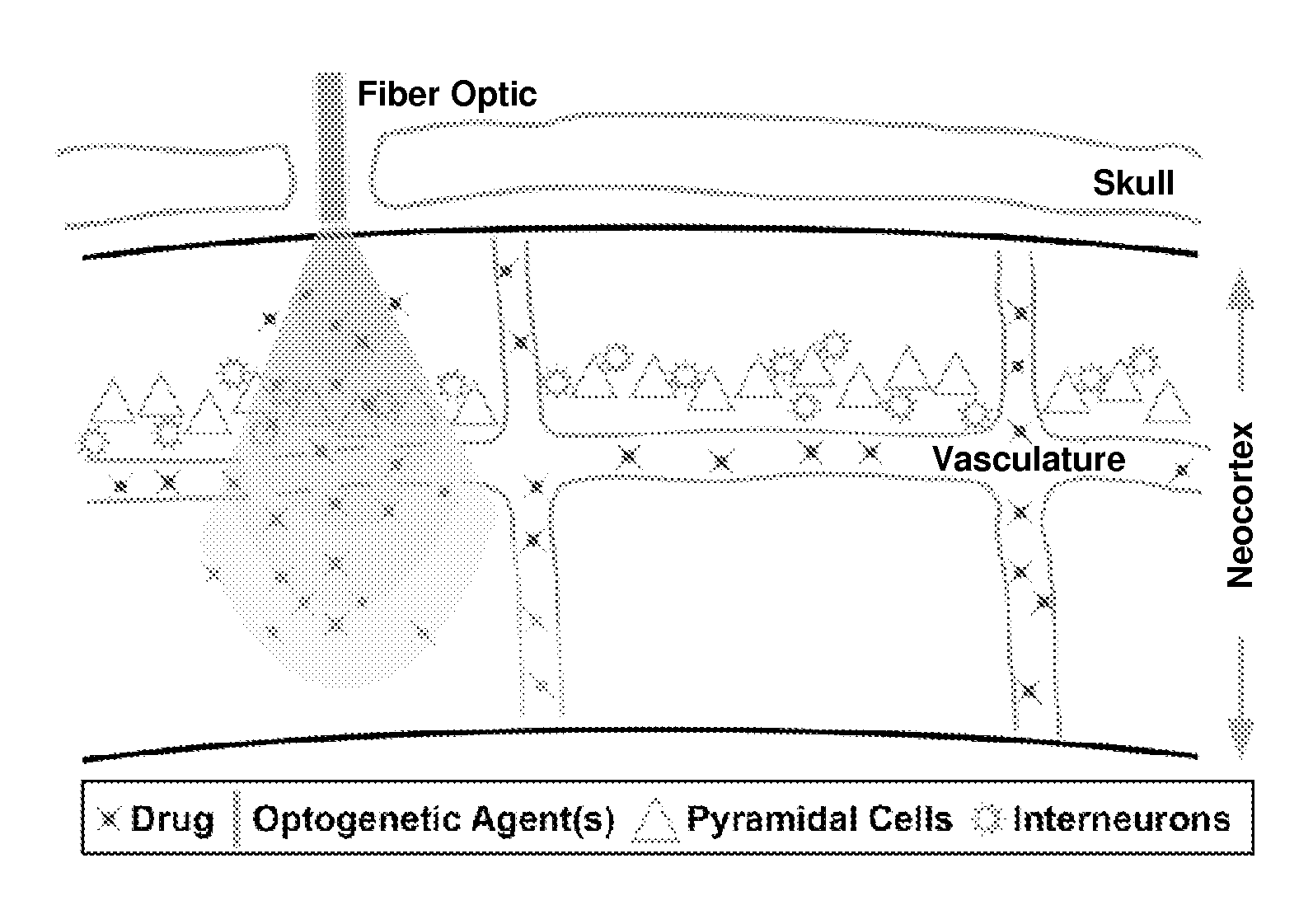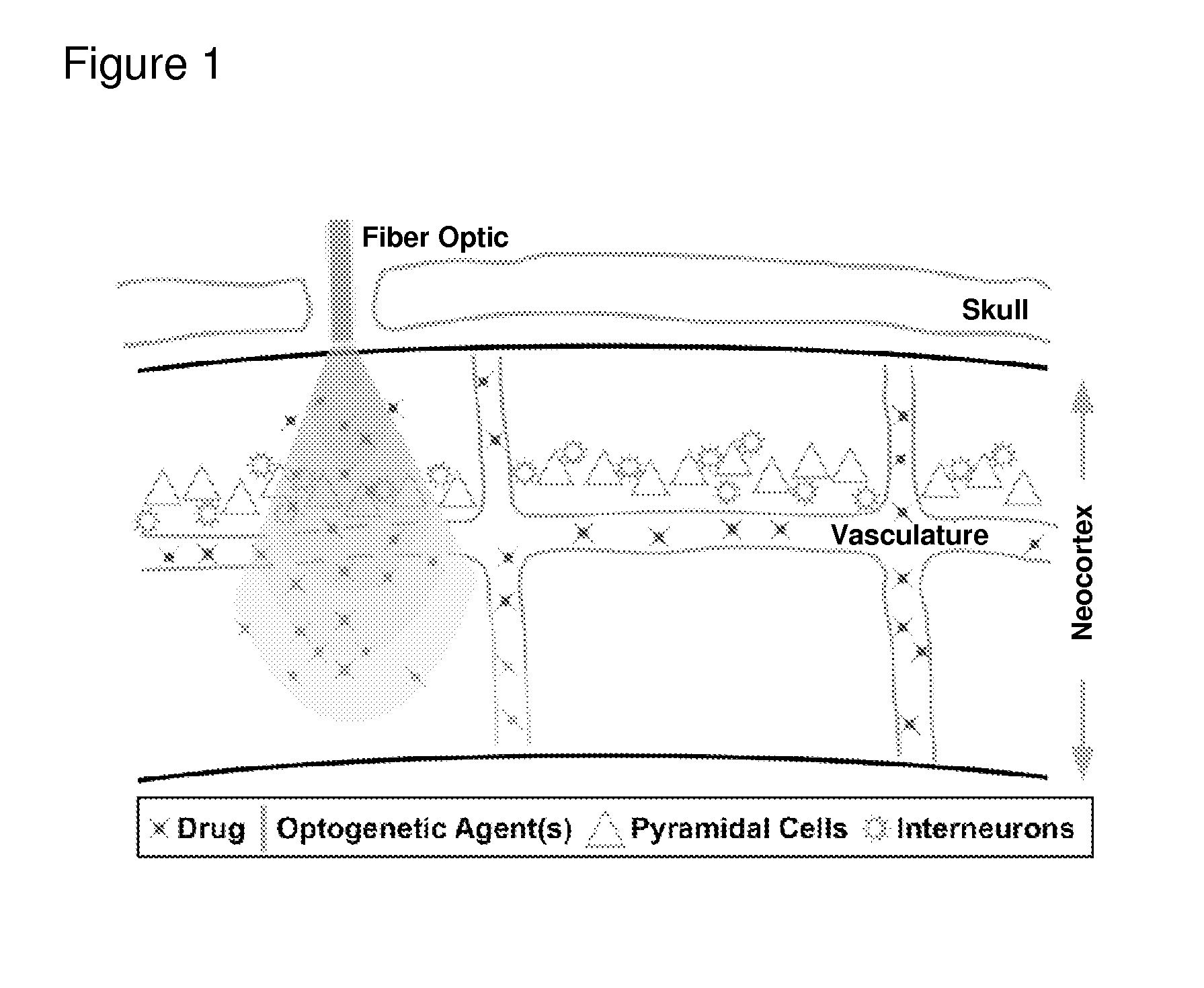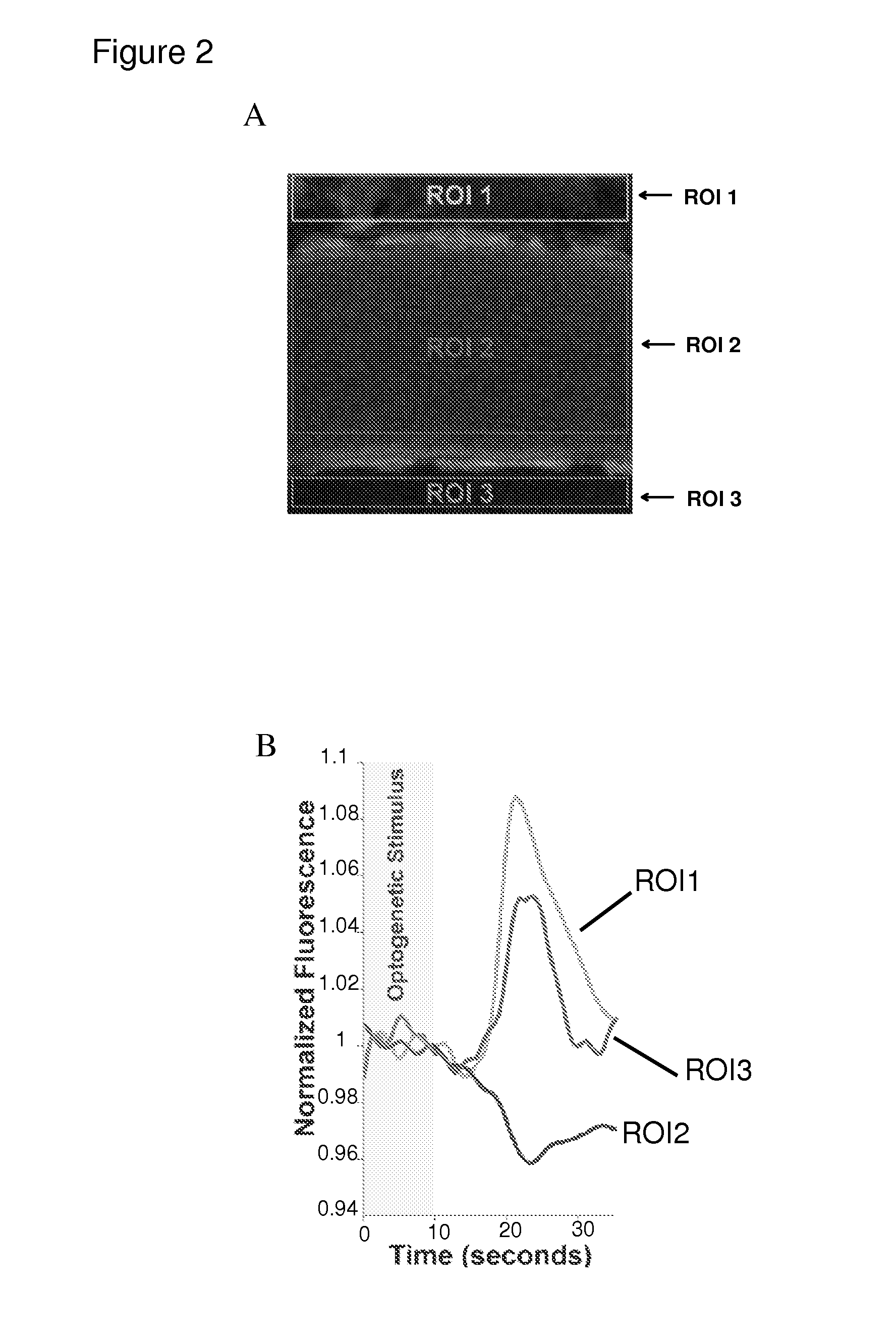Optogenetic control of endothelial cells
a technology of endothelial cells and endothelial cells, which is applied in the direction of peptides, viruses/bacteriophages, and therapy, etc., can solve the problems of inconvenient method, inconvenient sex, and inability to control endothelial cells,
- Summary
- Abstract
- Description
- Claims
- Application Information
AI Technical Summary
Benefits of technology
Problems solved by technology
Method used
Image
Examples
example 1
Modulation of EC Permeability in the BBB Using Halorhodopsin-3.0
[0110]Halorhodopsin-3.0 was selectively expressed in mouse ECs using IV viral injection. After ˜6 weeks, 2-photon imaging of the in vivo neocortex (a still image is shown in FIG. 2A) was used to test the impact of optogenetic stimulation on the BBB. To measure extravasation, rhodamine-dextran (10 kD), which does not typically cross the BBB, was injected via IV. Amber light pulses (optimized for Halorhodopsin) were presented for 10 seconds. Following stimulation, a discrete increase in fluorescence in neocortex surrounding the vessel occurred (ROIs 1 and 3 / time series) with a decrease in intra-arterial emission (ROI 2), indicating movement of rhodamine-dextran across the BBB into the brain (Please see FIGS. 2A and 2B). Vessel walls were stationary throughout, and control experiments in non-transduced mice did not show these effects. This BBB opening was discrete in time, <15 seconds.
example 2
Second Example of Modulation of EC Permeability in the BBB Using Halorhodopsin-3.0
[0111]Halorhodopsin-3.0 was selectively expressed in mouse ECs using transgenic mice bred to encode Cre-recombinase in ECs, and LoxP sequences flanking the fusion protein Halorhodopsin (eNpHR 3.0)-Enhanced Yellow Fluorescent Protein (Halo3.0-EYFP).
[0112]After ˜6 weeks, 2-photon imaging of the in vivo neocortex (a still image is shown in FIG. 3A) was used to test the impact of optogenetic stimulation on the BBB. To measure extravasation, rhodamine-dextran (10 kD), which does not typically cross the BBB, was injected via IV. Amber light pulses (optimized for Halorhodopsin) were presented for 10 seconds. Following stimulation (three independent presentations of the light), a discrete increase in fluorescence in neocortex surrounding the vessel occurred (ROIs 1 / time series) with a small decrease in intra-arterial emission on trials 2 and 3 (ROI 2), indicating movement of rhodamine-dextran across the BBB in...
example 3
Naturally-Occurring Changes in Vascular Width
[0113]The fusion protein Channelrhodopsin-2-Enhanced Yellow Fluorescent Protein (Ch2R-EYFP) was selectively expressed in mouse ECs using transgenic mice bred to encode Cre-recombinase in ECs, and LoxP sequences flanking the fusion protein Channelrhodopsin-2-Enhanced Yellow Fluorescent Protein (Ch2R-EYFP).
[0114]Observation of fluorescence using 2-photon microscopy confirmed the expression of Ch2R-EYFP in endothelial cells of a mouse arteriole localized above the primary sensory neocortical representation of the vibrissae (“whiskers”) on the face of the mouse (FIGS. 4A and 4B). The mouse vibrissae were stimulated by brief deflections applied at 5 Hz for 10 seconds. As is typical in our data, within hundreds of milliseconds of vibrissal deflection, a vascular width change is observed (FIGS. 4A and 4C). In this case, the width change was a dilation that sustained for ˜20 seconds. As shown in FIG. 4D, vascular constriction can be another obser...
PUM
| Property | Measurement | Unit |
|---|---|---|
| Flow rate | aaaaa | aaaaa |
| Diameter | aaaaa | aaaaa |
| Permeability | aaaaa | aaaaa |
Abstract
Description
Claims
Application Information
 Login to View More
Login to View More - R&D
- Intellectual Property
- Life Sciences
- Materials
- Tech Scout
- Unparalleled Data Quality
- Higher Quality Content
- 60% Fewer Hallucinations
Browse by: Latest US Patents, China's latest patents, Technical Efficacy Thesaurus, Application Domain, Technology Topic, Popular Technical Reports.
© 2025 PatSnap. All rights reserved.Legal|Privacy policy|Modern Slavery Act Transparency Statement|Sitemap|About US| Contact US: help@patsnap.com



